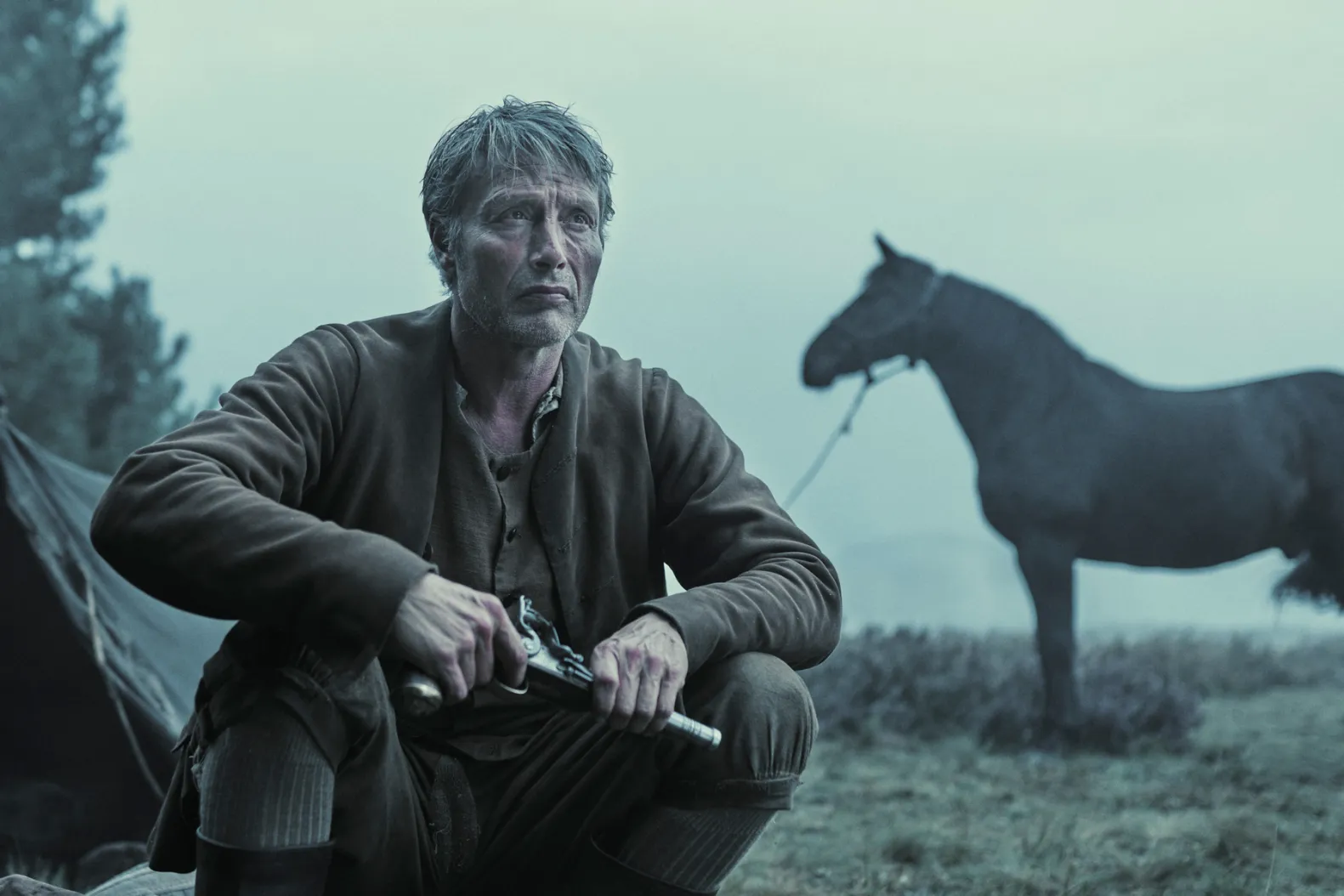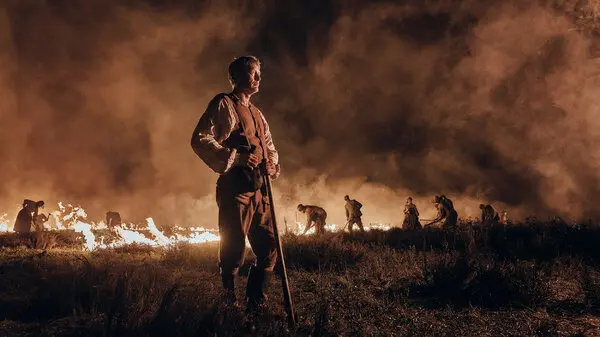Mikkelsen’s Danish Film Promised Land Recommendation. I’ll be honest with you – I didn’t understand that there was a European equivalent to the American “Homestead Act” of 1862. (Wherein settlers were given land in return for basically putting themselves and their families at risk of exposure, Native Americans, dysentery… ) So, to watch the 18th century Danish story of land expansion unfold with all kinds of political drama, and physical threats, I was fascinated. Directed by Nikolaj Arcel and starring the incomparable Mads Mikkelsen, the film weaves a narrative rich in historical detail, moral complexity, and emotional resonance. Probably the only real negative thing I could say was that there are large swaths of the story that do not jibe with the historical truth. But, it does give us all the same broad strokes.
Firstly – you need to watch this movie, solely because of Mikkelsen. Sure, it’s in Danish. And also because, “I’m an American, I don’t want to read my movies” is a really ignorant way to think about the cinema. I’m betting 90% of the folks swinging by THiNC. don’t think this way. But I’d argue 90% of Americans think this way. And it just really limits the available pool of interesting movies out there for you to enjoy. So, take a deep breath, and head over to Apple TV, Google, all the big streaming houses have this movie now.
The heart of The Promised Land is centered on the ambition, and grit, of Capt. Ludvig Kahlen, portrayed by Mads Mikkelsen, who brings a really fantastic morally ambiguous intensity that is both captivating and inexorably watchable. I loved how he was constantly making the wrong decisions as this story unfolded. And yet he was always trying to make amends as he went. Kahlen, a war veteran with little more than a frayed uniform and a well-polished medal, sets out to cultivate the untamable heath in Jutland. His ambition is grandiose — to create a settlement for king, country, and himself.
I really enjoyed how Nikolaj Arcel’s direction brought the vast shrubby expanse of Jutland to life with boundless aerial views that did a great job emphasizing the immensity and harsh grandeur of the land. Every time the camera took flight I realized that it was mirroring the soaring ambition of Kahlen as we watched him labor to cultivate the ground in a process that was totally engrossing. “Well, I’ll do it myself.” I mean… okay, chief. But in the winter, was that really even possible? How could he possibly turn the soil when it was frozen only using hand tools? Sure, I don’t know anything about farming, but I was enthralled by how the landscape became not just a setting but a character, echoing the emotional highs and lows of Kahlen’s enterprise.
Possibly the largest embellishment was the introduction to the story of an evil overlord de Schinkel, hellbent on upending Kahlen’s ambitions. And yet, I enjoyed rooting against these Imperial rotters in their wigs and satin. I also found the story of Ann Barbara, the servant that ran away, and the unraveling implications of that simple decision, the film introduces a cast that adds layers to the story. Mikkelsen’s anchoring performance prevents the characters from becoming mere archetypes, adding depth and emotional weight to the storytelling.
The Promised Land is not just a period piece; it’s a reflection on ambition, societal hierarchies, and the price one is willing to pay for dreams. Set against the backdrop of agricultural reforms and social upheavals, I thought that the film should resonate with modern audiences, drawing parallels to contemporary struggles for ambition and identity. I mean, I see parallels between our current TikTok social revolution to this agricultural upheaval. It’s not much of a leap if you think about it.
I have to say, that Rasmus Videbæk’s cinematography deftly captured the changing moods of the landscape. I cannot even imagine how difficult it was to film constantly under the whims of the weather – from impenetrable fogs to glaring sunlit expanses. And yet, the film’s production design and costumes feel lived-in and real. I do think that there was some clever utilization of CGI for the farmhouses and buildings – but the fact that I rewatched and rewatched these scenes to figure out just what was, and what wasn’t, CGI is kudos to the post production team here. It really was an immersive experience.
The Historical Embellishments of The Promised Land
“The Promised Land” takes inspiration from historical events in 18th-century Denmark but, like many cinematic adaptations, incorporates elements of fiction for dramatic effect. The central character, Capt. Ludvig Kahlen, was indeed a real person, and the settlement on the Jutland heath was a genuine historical event. However, the film embellishes these historical truths, weaving a narrative that blends fact with creative interpretation. In reality, Ludvig Kahlen’s endeavor to cultivate the heath faced challenges from the Danish monarchy and landowners, yet the movie intensifies these conflicts, introducing a sadistic antagonist in Frederik de Schinkel, whose character, while adding a layer of drama, may be more fictionalized than historical.
The film also captures the harsh realities of 18th-century Denmark, where social hierarchies were being challenged by agricultural reforms. The struggle depicted in “The Promised Land” mirrors the societal shifts of the time, where the rich lived in luxury while the common people faced serfdom. While the broad strokes of historical context are maintained, the movie takes liberties to emphasize emotional and moral dilemmas faced by its characters. This creative license, while altering specific details for cinematic impact, allows the film to delve into universal themes of ambition, sacrifice, and the human cost of pursuing dreams. In essence, “The Promised Land” serves as a cinematic interpretation that, while rooted in historical events, navigates the delicate balance between historical accuracy and the demands of compelling storytelling.
Final Thoughts on the Movie The Promised Land
The Promised Land stands as a testament to the art of storytelling, characterized by character development, emotional resonance, and attention to detail. While the film may touch on familiar historical tropes, its success lies in its ability to get both the big and small things right. As Ludvig Kahlen’s journey unfolds, so too does the emotional connection with the characters, making “The Promised Land” a cinematic experience that lingers, much like the sprawling heath it portrays. And heck, who knew that such a rich story about land and power could possibly come from somewhere other than the American West?!? hahaha.
Edited by: CY


